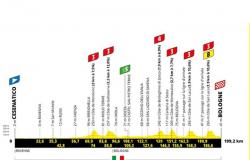Sardinian monuments: the pre-Nuragic altar of Monte d’Accoddi, similar to the Babylonian ziggurat.
In Sardinia there is an altar very similar to the “Ziggurat” of the ancient Mesopotamia.
The “Sardinian ziggurat” is located exactly in Monte d’Accoddi, a plain located 11 km from Sassari, along the old Carlo Felice towards Porto Torres. It is precisely a altar from the pre-Nuragic period truncated-pyramid shaped which was used for the cult of the fertility of the Earth and regeneration. But who built it? Legend tells of a Mesopotamian prince who fled and took refuge in Sardinia and built a megalithic complex used for worship; with the difference that, while the Middle Eastern ziggurats were “temples of the sun”, the prince dedicated it to the moon.
In reality, however, historians converge on the fact that the altar of Monte d’Accoddi was built around 2,700 BC by the people of the so-called “Abealzu-Filigosa culture”. The building took the place of another previously built in 3500 BC by the people of “Ozieri culture”, which however was destroyed by fire. Around the “ziggurat” there are the remains of a village made up of quadrangular huts, sacrificial stones and two spherical-shaped finds which, according to scholars, represented the sun and the moon in the eyes of the ancient inhabitants of the area.

(Photo: Wikimapia).
The terrace at the top of the “ziggurat” was, according to the beliefs of the time, the point of contact between man and divinity. It is also believed that inside there is a room that would have housed the bed of the priest who copulated every year with a virgin to perform the rite of “fertility of the Earth”. This is only a hypothesis, because no one has ever managed to dig due to the real danger of collapses. From the discovery of some stone slabs with seven holes around them, scholars believe they could have been used to bind the victims of sacrifices which, in all likelihood, were cattle. This thesis is supported by the discovery of fossils with remains of sacred meals and tools used in propitiatory rites.

(Photo: wikimapia)
The “Sardinian ziggurat” was abandoned at the beginning of the Early Bronze Age (1800 BC) but was only occasionally reused for burials. During the Second World War, trenches used by anti-aircraft guns were dug around it, causing irreparable damage to the site. The altar was discovered almost by chance in 1954 by Ercole Contu, when archaeologists noticed an anomalous mass of earth forming a hill in an otherwise completely flat area. Hence, the excavations that brought this to light unique treasurefor architectural structure, not only in Europe, but throughout the Mediterranean basin.


© ALL RIGHTS RESERVED











